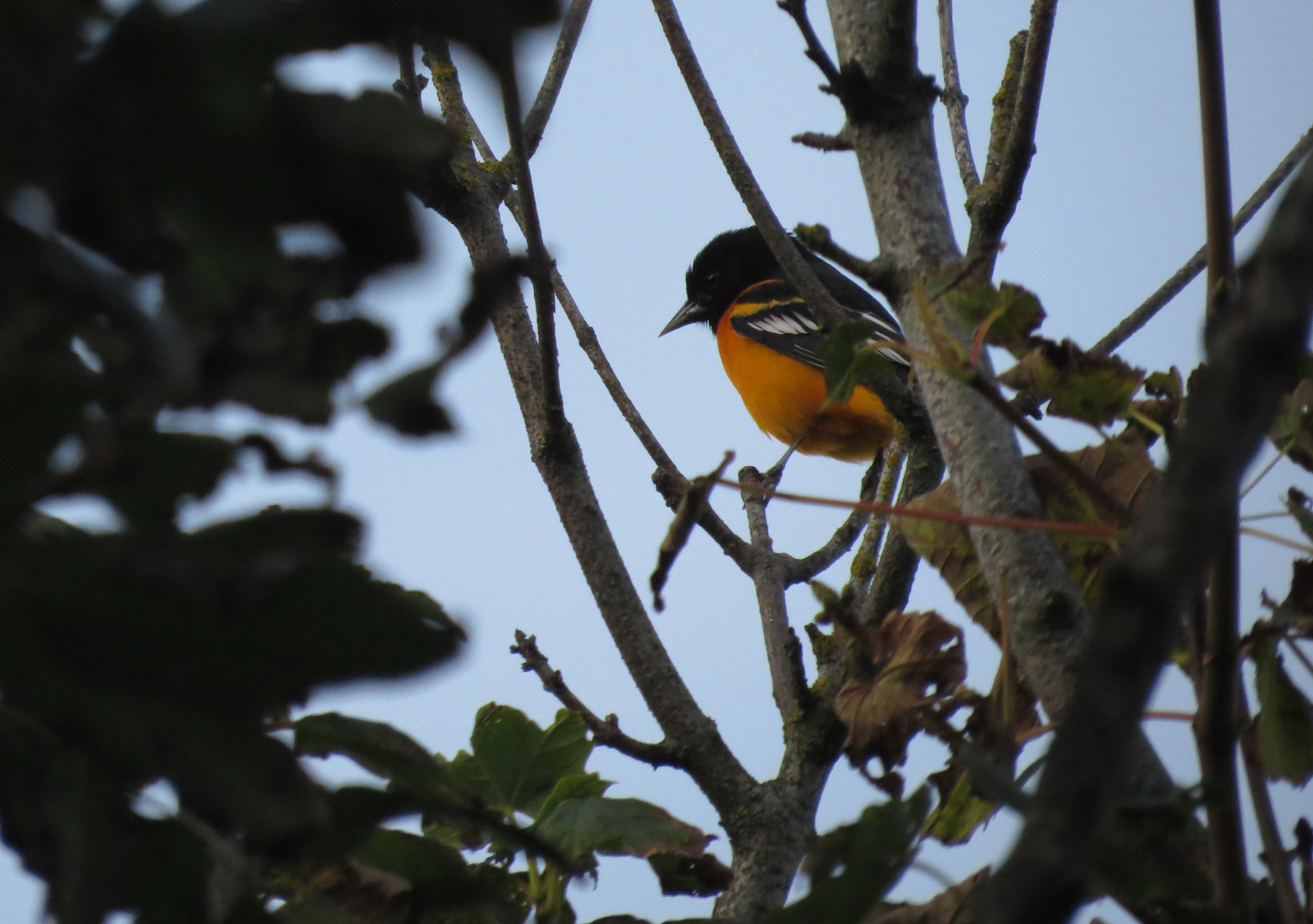Angus recounts an impressive October week on the island.
Another week of high
SW winds apart from Saturday 8th which was extremely calm and sunny in
contrast.
The past week has been a bit quieter on the sightings front,
with lower migrant passage and many birds hunkering down out of the wind and
rain. This all changed on Saturday, when wings once again filled the air, and a
mega-rare treat awaited the conservation team…
Water Rail have once again been heard calling in Smelly
Gully, with two birds on Saturday evening and another on the morning census on
the 9th. A total of 22 Oystercatcher were recorded around the entire
coastline whilst surveying for seals on the 9th. A single Manx
Shearwater as well as a Sooty Shearwater were picked up on a sea
watch from South West Point on the 8th.
A Black-tailed Godwit was found feeding in
Pondsbury on the 3rd. Two Golden Plover were seen flying in off of
the sea by the quarry hospital on the 6th, with three present on the 7th and
then four flying together on the 8th. At least one bird remained on the 9th. A
very tired juvenile Ringed Plover was discovered in the landing bay
on the 5th, allowing people to approach extremely closely. It was helped over
to the strandline to feed on insects among the seaweed, but was still looking
quite tired when resighted on the beach road on the 6th. Single Snipe were
recorded on the 7th, 8th and 9th. Two Lesser Black-backed Gulls flew
over on the 9th, the first for a few weeks, and four Cormorants flew
over the south west of the island on the 8th.
Sparrowhawk, Kestrel, Peregrine and Merlin all
continue to be seen most days, and most were showing particularly well on the
sunny Saturday, with two Peregrines soaring high above the castle and
three seen on Sunday too. A Red Kite was seen drifting north from
South West point on the 8th.
14 Redwing were heard flying over on the 7th and
12 were seen on the 8th. Earlier in the week a Treecreeper was seen on
the 3rd, two Chiffchaffs on the 5th, a Pied Flycatcher on
the 6th, a Tree Sparrow on the 7th and a couple of Blackcap each
day were the highlights of a rather quiet week. Skylarks had still
been seen in decent number on the 5th and 6th with 10 and 15 respectively and
there were six Stonechat on the 6th. We keep thinking that we’ve
possibly seen the last Wheatear but some more individuals keep on
filtering through, with one of the 4th and one on the 6th. There was also some
higher numbers of Starlings this week, with 300 recorded on the 5th.
The beautiful weather on Saturday 8th led to many more birds
passing over and through, including 30 Skylarks, four Sand
Martin, 300 Swallows, 200 House Martin, 31 Meadow Pipit, two Yellow
Wagtail and two Grey Wagtail. In Millcombe there were 50 Goldcrest,
seven Blackcap, 14 Wren, eight Blackbird and five Dunnock.
It was also a good day for finches with eight Chaffinch, 17 Goldfinch,
17 Siskin and 18 Linnet. The highlight of the day
(/week/year?!) came at 2.30pm when a Baltimore Oriole was discovered
in the willows below Government by volunteer Angus. An incredibly striking
adult male, this bird is a fantastic record for the UK (27th bird, 3rd adult
male). This week’s sighting is now the 3rd record and 4th individual for Lundy,
with one in 1958 and two birds (one deceased) in 1967. The first record for
Lundy was also the first for Britain. All have been early-mid October. The bird
was watched for 15 minutes before being relocated and watched for an hour at
5.30pm by the whole conservation team.
 |
| Baltimore Oriole, Millcombe © Tom Wright |
 |
| Baltimore Oriole, Millcombe © Angus Croudace |
Contributors: S Cossey, R Ellis, A Croudace, T Wright, M Thorne, M Bailey
Presumably the 39 Siskin were seen together as a flock passing through as they’re not a common presence on the island?
ReplyDelete